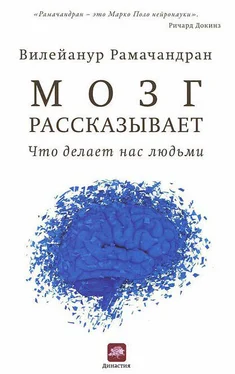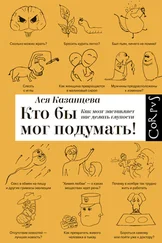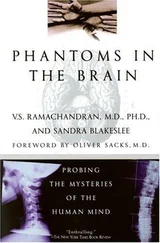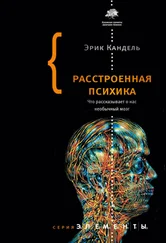Domino, G. (1989). Synesthesia and creativity in fine arts students: An empirical look. Creativity Research Journal, 2,17–29.
‘Edelman, G. M. (1989). The remembered present: A biological theory of consciousness.New York: Basic Books.
‘Ehrlich, P. (2000). Human natures: Genes, cultures, and human prospect. Harmondsworth, UK: Penguin Books.
Eng, K.Siekierka, E., Pyk, P., Chevrier, E., Hauser, Y., Cameirao, М., et al. (2007). Interactive visuo-motor therapy system for stroke rehabilitation. Medical and Biological Engineering and Computing, 45,901–907.
‘Enoch, M. D., & Trethowan, W. H. (1991). Uncommon psychiatric syndromes (3rd ed.). Oxford: Butterworth-Heinemann.
‘Feinberg, Т. E. (2001). Altered egos: How the brain creates the self. Oxford University Press.
Fink, G. R., Marshall, J. C., Halligan, P. W., Frith, C. D., Driver, J., Frackowiak, R. S., et al. (1999). The neural consequences of conflict between intention and the senses. Brain, 122,497–512.
First, M. (2005). Desire for an amputation of a limb: Paraphilia, psychosis, or a new type of identity disorder. Psychological Medicine, 35,919–928.
Flor, H., Elbert, Т., Knecht, S., Wienbruch, C., Pantev, C.Birbaumer, N., et al. (1995). Phantom-limb pain as a perceptual correlate of cortical reorganization following arm amputation. Nature, 375,482–484.
Fogassi, L., Ferrari, P. F., Gesierich B., Rozzi, S., Chersi, F., & Rizzolatti, F. (2005, April 29). Parietal lobe: From action organization to intention understanding. Science, 308,662–667.
Friedmann, С. Т. Н., & Faguet, R. А. (1982). Extraordinary disorders of human behavior. New York: Plenum Press.
Frith, C. & Frith, U. (1999, November 26). Interacting minds-A biological basis. Science, 286, 1692–1695.
Frith, U., & Happe, F. (1999). Theory of mind and self consciousness: What is it like to be autistic? Mind and Language, 14,1-22.
Gallese, V., Fadiga, L., Fogassi, L., & Rizzolatti, G. (1996). Action recognition in the premotor cortex. Brain, 119, 593–609.
Gallese, V., & Goldman, A. (1998). Mirror neurons and the simulation theory of mindreading. Trends in Cognitive Sciences, 12,493–501.
Garry, М. I., Loftus, A., & Summers, J. J. (2005). Mirror, mirror on the wall: Viewing a mirror reflection of unilateral hand movements facilitates ipsilateral M1 excitability. Experimental Brain Research, 163,118–122.
‘Gawande, A. (2008, June, 30). Annals of medicine: The itch. New Yorker, pp. 58–64.
‘Gazzaniga, M. (1992). Nature’s mind. New York: Basic Books.
‘Glynn, I. (1999). An anatomy of thought. London: Weidenfeld & Nicolson.
‘Greenfield, S. (2000). The human brain: A guided tour. London: Weidenfeld & Nicolson.
‘Gregory, R. L. (1966). Eye and brain. London: Weidenfeld & Nicolson. Gregory, R. L.
(1992). Odd perceptions. New York: Routledge.
Grossenbacher, P. G., & Lovelace, С. T. (2001). Mechanisms of synesthesia: Cognitive and physiological constraints. Trends in Cognitive Sciences, 5(1), 36–41.
Happe, F., & Frith, U. (2006). The weak coherence account: Detail-focused cognitive style in autism spectrum disorders. Journal of Autism and Developmental Disorders, 36(1), 5-25.
Happe, F., & Ronald, A. (2008). The «fractionable autism triad»: A review of evidence from behavioural, genetic, cognitive and neural research. Neuropsychology Review, 18(4), 287–304.
Harris, A. J. (2000). Cortical origin of pathological pain. The Lancet, 355, 318–319.
Havas, H., SchifFman, G., & Bushnell, M. (1990). The effect of bacterial vaccine on tumors and immune response of ICR/Ha mice. Journal of Biological Response Modifiers, 9,194–204.
Hirstein, W., Iversen, P., Ramachandran, V. S. (2001). Autonomic responses of autistic children to people and objects. Proceedings of the Royal Society of London, Series B: Biological Sciences, 268(1479), 1883–1888.
Hirstein, W., & Ramachandran, V. S. (1997). Capgras syndrome: A novel probe for understanding the neural representation and familiarity of persons. Proceedings of the Royal Society of London, Series B: Biological Sciences, 264(1380), 437–444.
Holmes, N. P., & Spence, C. (2005). Visual bias of unseen hand position with a mirror: Spatial and temporal factors. Experimental Brain Research, 166,489–497.
Hubbard, E. М., Arman, A. C., Ramachandran, V. S., & Boynton, G. (2005). Individual differences among grapheme-color synesthetes: Brain-behavior correlations. Neuron, 45(6), 975–985.
Hubbard, E. М., Manohar, S., & Ramachandran, V. S. (2006). Contrast affects the strength of synesthetic colors. Cortex, 42(2), 184–194.
Hubbard, Е. М., & Ramachandran, V. S.(2005). Neurocognitive mechanisms of synesthesia. Neuron, 48(3), 509–520.
«Hubei, D. (1988). Eye, brain, and vision. Scientific American Library Series. New York: W. H. Freeman.
Humphrey, N. (1992). A history of the mind. New York: Simon & Schuster. Humphrey, N. K. (1980). Nature s psychologists. InB. D. Josephson & V. S. Ramachandran (Eds.), Consciousness and the physical world: Edited proceedings of an interdisciplinary symposium on consciousness held at the University of Cambridge in January 1978. Oxford, UK/New York: Pergamon Press.
‘Humphreys, G. W., & Riddoch, M. J. (1998). To see but not to see: A case study of visual agnosia. Hove, East Sussex, UK: Psychology Press.
’Iacoboni, M. (2008). Mirroring people: The new science of how we connect with others. New York: Farrar, Straus.
Iacoboni, М., & Dapretto, M. (2006, December). The mirror neuron system and the consequences of its dysfunction. Nature Reviews Neuroscience, 7(12), 942–951.
Iacoboni, М., Molnar-Szakacs, I., Gallese, V., Buccino, G., Mazziotta, J. C., & Rizzolatti, G. (2005). Grasping the intentions of others with one’s own mirror neuron system. PLoS Biology, 3(3). e79.
Iacoboni, М., Woods, R. P., Brass, М., Bekkering, H., Mazziotta, J. C., & Rizzolatti, G. (1999, December 24). Cortical mechanisms of human imitation. Science, 286, 2526–2528.
Jellema, Т., Oram, M. W.Baker, С. I., & Perrett, D. I. (2002). Cell populations in the banks of the superior temporal sulcus of the macaque monkey and imitation. In a. N. Melzoff & W. Prinz (Eds.), The imitative mind: Development, evolution, and brain bases (pp. 267–290). Cambridge, UK: Cambridge University Press.
Johansson, G. (1975). Visual motion perception. Scientific American, 236(6), 76–88.
‘Kandel, E. (2005). Psychiatry, psychoanalysis, and the new biology of the mind. Washington, DC: American Psychiatric Publishing.
‘Kandel, E. R., Schwartz, J. H., & Jessell, Т. M. (Eds.). (1991). Principles of neural science (3rd ed.). Norwalk, CT: Appleton & Lange.
Читать дальше












